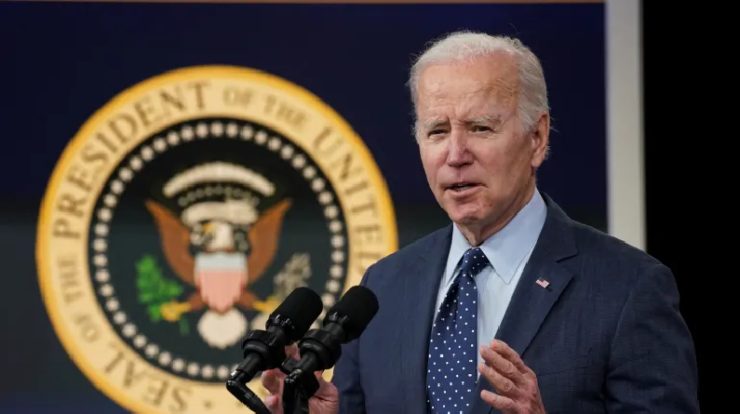
Despite Southeast Asia’s strategic importance in the developing U.S.-China standoff, the 2021 Biden administration’s policy towards the region fell far short of expectations. The Biden administration failed to establish a regional strategy in its first year in office, sending too few ambassadors and paying insufficient attention to developing relationships with other world leaders.
However, in 2022, the administration upped its presence in the region, provided greater clarity in key strategy documents, and increased cooperation through initiatives like the strengthened Comprehensive Strategic Partnership between the United States and the Association of Southeast Asian Nations (ASEAN). But much work remains; the administration has yet to develop a workable economic strategy, its focus on containing China could drive away key regional allies, and prioritising a values-based foreign policy would be counterproductive in a region dominated by authoritarian and semi-authoritarian states.
The administration made a point of showing up in 2022, which was a major improvement. It is clear that high-level, in-person meetings are necessary for progress on issues and policies, especially after two years of only virtual engagement due to the pandemic. In November of last year, Vice President Joe Biden travelled to Cambodia for the U.S.-ASEAN summit, to East Asia for the East Asia summit, and to Indonesia for the G-20 summit.
Vice President Kamala Harris attended the Asia-Pacific Economic Cooperation summit on behalf of Vice President Joe Biden, who skipped the meeting in Thailand to celebrate his granddaughter’s wedding at the White House. U.S. Secretary of State Antony Blinken travelled to Cambodia, Indonesia, Thailand, and the Philippines; Defense Secretary Lloyd Austin visited Cambodia, Indonesia, and Singapore; and Deputy Secretary of State Wendy Sherman travelled to Laos, the Philippines, and Vietnam.
Not only did the administration make an appearance in Southeast Asia, but it also increased its involvement in other ways. Biden convened nearly all ASEAN leaders for a historic U.S.-ASEAN Special Summit at the White House in May. (The leader of Myanmar’s junta was not invited, and the then-President of the Philippines, Rodrigo Duterte, declined the invitation because of a looming election in his country.) Despite China’s growing political, economic, and military clout in the region, the summit sent a signal that the United States still wields significant influence, even if the outcome was light on actual policy deliverables.
Key strategy documents clarifying the Biden administration’s approach to Southeast Asia were published in 2022. To avoid upsetting the countries of Southeast Asia, the new U.S. Indo-Pacific Strategy (PDF) avoided talking about competition with China. The strategy instead prioritises strengthening health security, addressing maritime challenges, increasing connectivity, and deepening people-to-people ties through bilateral cooperation. The United States is in a better position than China to provide solutions to some of Southeast Asia’s most pressing problems.
The Biden administration’s National Security Strategy (PDF) was released in October as a follow-up to the previous document, the Interim National Security Strategic Guidance (PDF), which had been in effect since March 2021. The new plan includes the phrase “deepening our five regional treaty alliances and closest partnerships,” which is a reference to the five alliances that President Biden’s team has established so far. This edit works well. Even if it’s true that Vietnam and Singapore are close U.S. partners, highlighting that fact as part of a public U.S. strategy made them unnecessarily uncomfortable in their relationships with China. Other countries, including the United States’ treaty allies the Philippines and Thailand, were seemingly ignored in favour of the ones named.
The White House has stated its intention to “expand our regional diplomatic, development, and economic engagement, with a particular focus on Southeast Asia,” as well as to “affirm the centrality of ASEAN” and “seek deeper bonds with Southeast Asian partners” in its new Asia strategy. Aside from this, the new National Defense Strategy (PDF) states that the United States “will invigorate multilateral approaches to security challenges in the region, including by promoting the role of the Association of Southeast Asian Nations in addressing regional security issues.”
No matter how sweet they sound to an audience in Southeast Asia, words can only go so far. Actions carry more weight than words. The Indo-Pacific Economic Framework for Prosperity (IPEF) is a policy that the Biden administration has been pushing as a way to work together with multiple nations to improve economic growth in a way that benefits everyone. Of course, another goal of IPEF is to balance China’s rising economic clout in the region. Seven of the ten ASEAN countries have signed on since the Biden team’s unveiling in May. In addition to Myanmar, which was excluded after its coup in February 2021, neither Cambodia nor Laos were invited. This is likely due to the Biden team’s preexisting belief that both countries are Chinese client states.
Whereas the 12-nation Trans-Pacific Partnership (TPP) included four Southeast Asian states (Brunei, Malaysia, Singapore, and Vietnam), IPEF is much more modest in scope. There is some hope that IPEF will lead to greater economic cooperation between the United States and Southeast Asia. In addition, it is a significant achievement to have the support of seven of the ten ASEAN members.
However, IPEF has been criticised largely because it is only an agreement to negotiate and not an actual agreement. Southeast Asian countries want more U.S. trade, but IPEF doesn’t provide it, and Washington isn’t likely to rejoin the TPP (now renamed the Comprehensive and Progressive Agreement for Trans-Pacific Partnership) because of scepticism about passing a new trade deal in Congress and Vice President Biden’s desire to better protect American workers.
Biden’s attendance at the U.S.-ASEAN Summit in November of last year was also significant. Foreign policy, economics, defence, health, transportation, women’s empowerment, the environment, climate, and energy are just some of the areas where Biden and ASEAN leaders agreed to increase their collaboration to the level of a “comprehensive strategic partnership,” a term used in U.S. diplomacy. This is a major policy win for the Biden administration, and it helps to balance out China’s success in 2021 in launching a competing partnership with ASEAN.
At long last, the Senate has approved all of the Biden administration’s nominees for ambassador in the region. There are now ambassadors stationed in each ASEAN country, representing the United States government. Considering that Biden had so few confirmed ambassadors by the end of 2021 and that many of his nominees to other geostrategic countries, including India and Saudi Arabia, are still awaiting confirmation, this is an impressive achievement. In addition, the Biden administration reengaged with the ASEAN headquarters by having a new ambassador to the bloc confirmed in August, after having only a chargé d’affaires for the previous five years.
On the whole, the books are in much better shape at the two-year mark of the Biden administration than they were at the same point a year ago. However, the lack of a serious economic strategy to compete with China’s presence in the region remains a glaring issue. IPEF’s lofty goals, on the other hand, are no match for the TPP’s concrete trade commitments. Additional market access to the United States is what Southeast Asian countries really want from Washington, but this is a political nonstarter for the Biden administration.
Meanwhile, China joined the ASEAN-led Regional Comprehensive Economic Partnership (RCEP) in 2022, joining partners like the United States and Australia, Japan, New Zealand, and South Korea. About one-third of global GDP is generated through trade within RCEP, but the United States is not a party to this agreement.
Furthermore, Beijing keeps becoming the most important economic partner for almost every Southeast Asian country, including U.S. treaty allies.
This is especially true when discussing the immense benefits that Beijing’s Belt and Road Initiative (BRI) provides to developing countries in Southeast Asia. Each and every ASEAN nation is also a BRI partner. There were few viable solutions to 2022’s competitive economic challenges that could be implemented by the Biden administration. A possible exception is the G-7’s new Partnership for Global Infrastructure and Investment. The programme will offer infrastructure projects across the developing world and is funded at $600 billion, providing a clear counter to BRI. The programme will place an emphasis on transparency, sustainability, and democratically driven forms of engagement.
It’s no secret that rising tensions between the United States and China have unnerved Southeast Asian countries. Since the Quadrilateral Security Dialogue (Quad) between the United States, Australia, India, and Japan was revived under the Biden administration, it has stoked the fires of competition for many, if not most, Southeast Asian governments.
While the Quad is working independently to push back against China to ensure a “free and open” Indo-Pacific, ASEAN members may be left wondering how they can remain “central” to the region. Some ASEAN members were also unsettled by the September 2021 announcement of the security pact between Australia, the United Kingdom, and the United States (known as AUKUS) made by the Biden administration.
Certain countries, such as Indonesia and Malaysia, are concerned about the potential for a new arms race as a result of AUKUS, which allows the United States to provide nuclear-powered submarines to Australia at the request of the Australian government. Washington’s actions make it abundantly clear that bolstering security is still the top priority, despite what the administration has promised to Southeast Asia.
See Also: 3 of the best suit styles for men
The prevalence of authoritarian or semi-authoritarian states in Southeast Asia presents a significant challenge for the Biden administration, which must find a way to reconcile its values-based foreign policy with this reality. Embarrassing examples include the December 2021 Summit for Democracy hosted by the Biden administration, which only invited the three democracies in the region (Indonesia, Malaysia, and the Philippines).
If the Biden administration doesn’t realise the limits of its values-based approach, another round of discomfort is likely to follow in March, when the second such summit is hosted by the Biden administration.
As a whole, however, 2022 was a vast improvement for the Biden administration, and the trend is expected to continue in 2023. As long as tensions between the United States and China do not rise too high, Southeast Asian countries will feel safe increasing their ties to the United States. The Biden administration, however, needs a workable economic strategy that includes Southeast Asia in order to take things to the next level. It will be much harder for Washington to keep Beijing in check without this.

